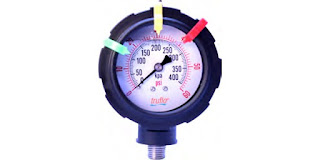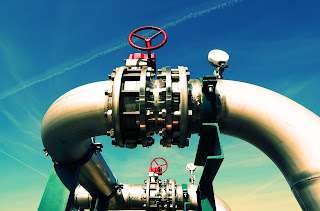 |
Industrial process tanks use measurement instruments
to reveal the nature of their contents. |
Storage and process tanks are employed throughout a broad range of industrial, research, and commercial applications. The design and construction of the vessels varies widely, but there are a few measurement and control functions common to almost all applications. Whether general purpose or very specialized, a process or facility operator with a tank will need to know…
- Nature of the contents. What is in the tank.
- Quantity of material in the tank. This can be expressed as weight, mass, level or volume.
- Condition of the material in the tank. This can include temperature, pressure, or a range of other specific attributes which may have a bearing on the process or operation for which the material is to be used or applied.
Instrumentation and fixtures of varying styles and types are used to provide information relating to the three areas noted above. A broad range of tank level measurement techniques and instruments are employed to quantify tank contents. Specialized sensors can be used to measure conductivity, pH, and a host of other material aspects.
Industrial storage tanks are used as containers for everything from water to fuels to chemicals. Contents may be pressurized or
blanketed with ignition suppressing gases, such as nitrogen. The construction of a process tank must meet requirements for safety and functionality related to its specific use. Well known commercial applications include those in food, beverage, and dairy sectors. Every industrial or commercial use will have standards for physical safety, product safety and quality, as well as requirements for effective integration into whatever system the application presents.
Mixing tanks perform a different function in the control process as opposed to storage tanks. Mix tanks are involved in batching and blending processes. Made of glass, plastic, sturdy rubber, or stainless steel, mixing tanks blend different substances together to create materials for production. The refined mixing process occurs as certain amounts of liquids are funneled into the tank from lines leading to the tank. The tanks may be provided with specialized fixtures or apparatus to facilitate the combining of constituent substances. Depending upon the application, the components may not all be liquid.
The term “tanks”, per se, encompasses practically an entire industry in itself. The variety of sizes, forms, materials, and accessory features is enormous. Share your tank instrumentation and measurement challenges with
process measurement specialists, leveraging your own knowledge and experience with their product application expertise to develop an effective solution.






